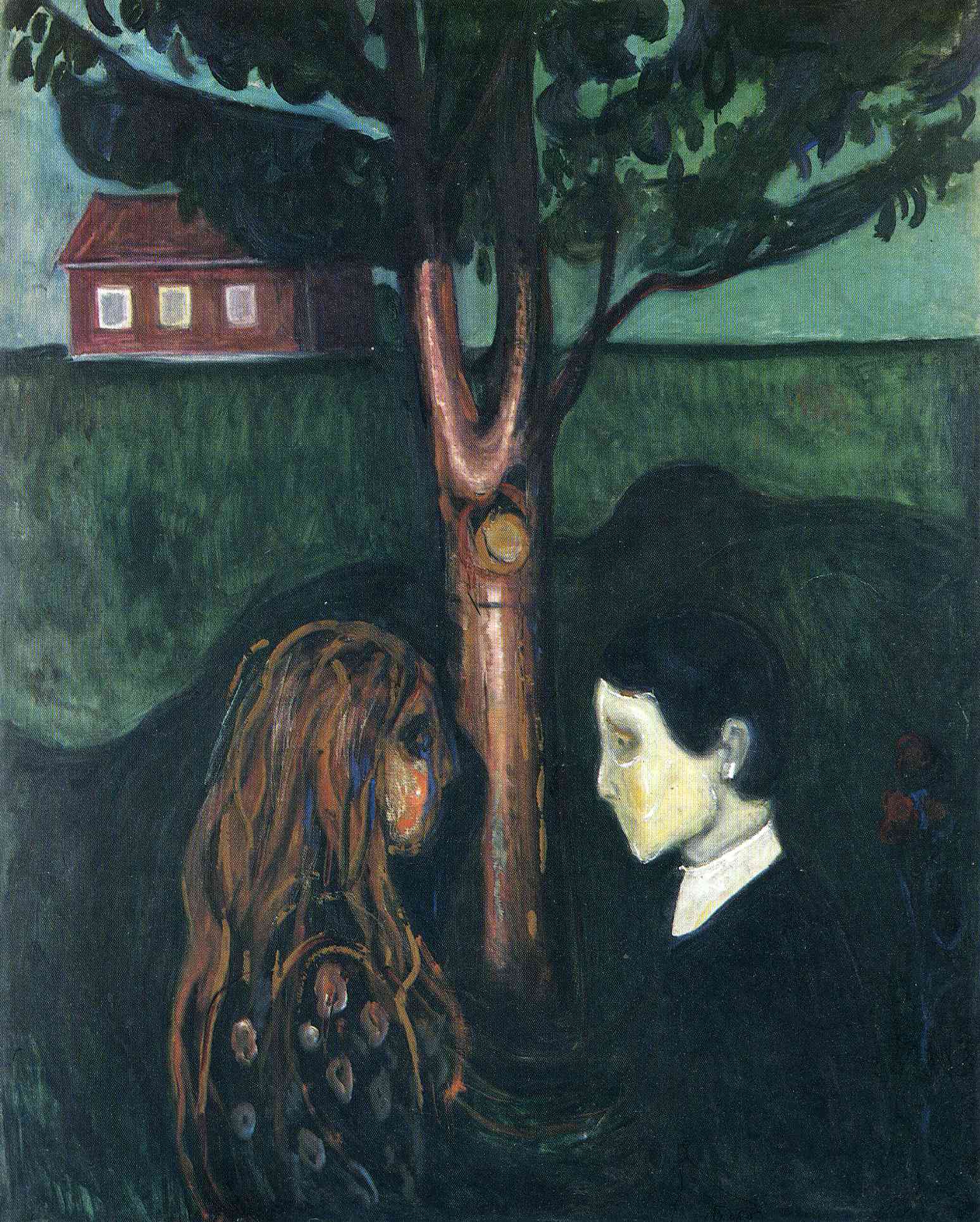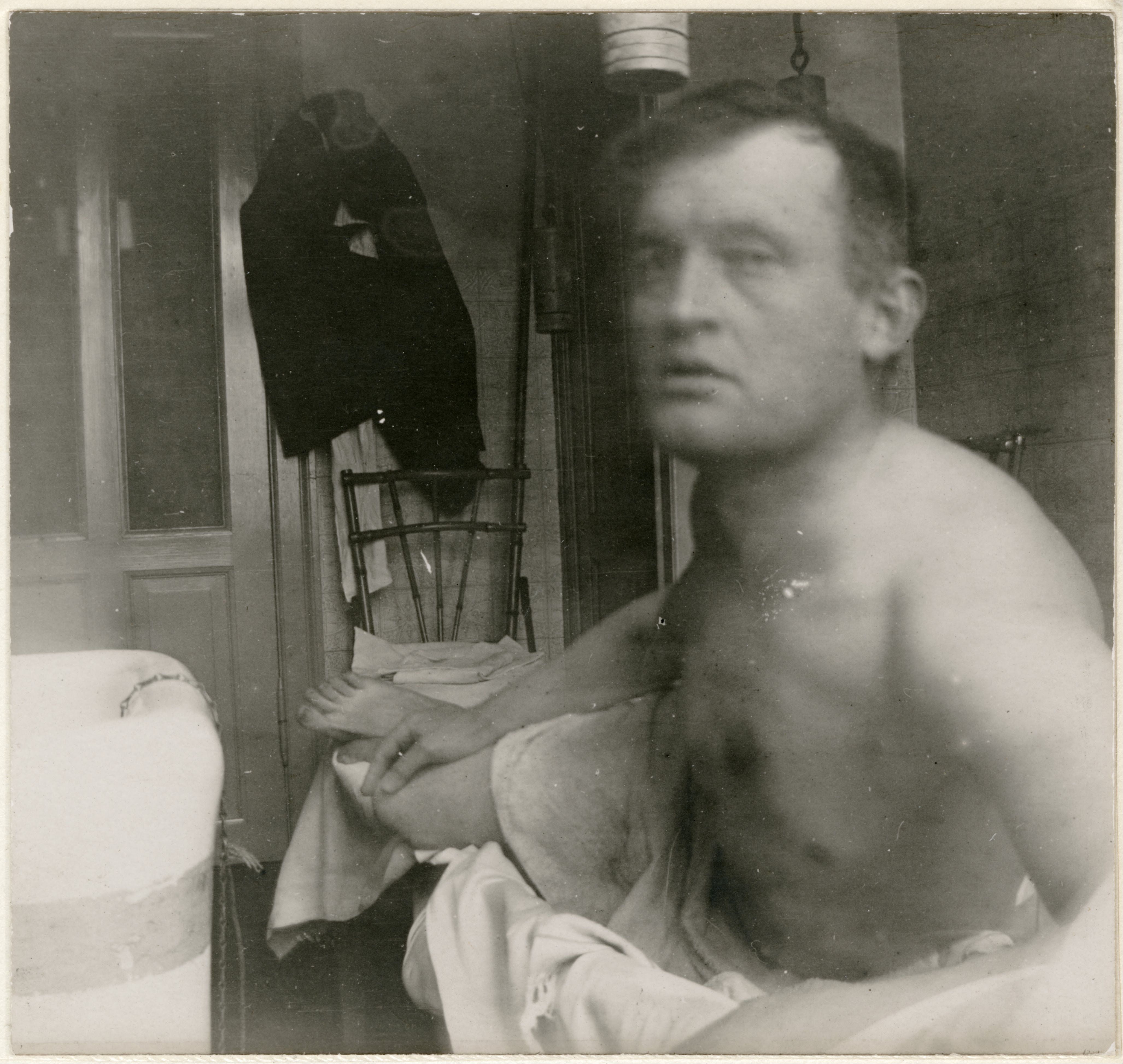Munch often used shadows and rings of color around his figures to emphasize an aura of fear, menace, anxiety, or sexual intensity. These paintings have been interpreted as reflections of the artist's own sexual anxieties, though it could also be argued that they are a better representation of his turbulent relationship with love itself and his general pessimism regarding human existence. Many of these sketches and paintings were done in several versions, such as Madonna, Hands and Puberty, and also transcribed as wood-block prints and lithographs. Munch hated to part with his paintings because he thought of his work as a single body of expression. So to capitalize on his production and generate some income, he turned to graphic arts to reproduce many of his most famous paintings -including those in this series. Munch admitted to the personal goals of his work but he also offered his art to a wider purpose: "My art is really a voluntary confession and an attempt to explain to myself my relationship with life—it is, therefore, actually a sort of egoism, but I am constantly hoping that through this I can help others achieve clarity”.




Eye in Eye
oil on canvas • 136 x 110 cm
 Edvard Munch
Edvard Munch